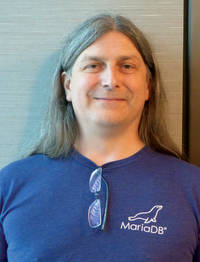
Interview with the MariaDB Foundation board Chairman Eric Herman
Enriched Ecosystem
The MariaDB database has been around, in one form or another, for more than two decades. It is used by some of the marquee offline and online properties and has an extremely large ecosystem. Although the development of the database mostly happens inside various organizations, it is the mandate of the MariaDB Foundation to ensure the codebase remains open source. At Percona Live Europe, I sat with Eric Herman, Chairman of the MariaDB Foundation board, to understand how the board fosters healthy collaboration in the seemingly complex and tangled ecosystem of the database.
Linux Magazine: Yesterday we were talking about how you don't feel like an outsider in this conference, although all they seem to be talking about is MySQL, not MariaDB.
Eric Herman: Do I feel like an outsider? Well, certainly I don't, and a big reason why I don't is that the community of developers for Oracle MySQL Server, for Percona Server, for MariaDB Server is a community that has a lot of overlap. When I first started at MySQL in 2004, I met many developers, most of which are still in the ecosystem at one of the various companies. There's several that are at Oracle, there's several that are at MariaDB.com, there's some that are at MariaDB.org, there's some that are Percona and Galera. So there's a community of people that have stayed in touch, and I would say, across all of the organizations, that new people have been brought in and there's a high level of competence across the field. So there's always interesting technical discussions that you can have with any of the people, and, of course, the history makes it easier to have some of these discussions and they can get quite animated. I think there's a lot of respect in there for people regardless of which of the members of the ecosystem they're working for at this moment. Because I've been with the ecosystem a long time, I certainly don't feel like an
...Buy this article as PDF
(incl. VAT)
Buy ADMIN Magazine
Subscribe to our ADMIN Newsletters
Subscribe to our Linux Newsletters
Find Linux and Open Source Jobs
Most Popular
Support Our Work
ADMIN content is made possible with support from readers like you. Please consider contributing when you've found an article to be beneficial.



